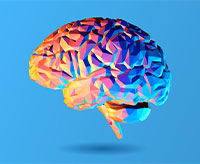The drug donanemab significantly slowed the clinical progression of Alzheimer’s disease among patients with mild cognitive impairment or mild dementia, according to a study published yesterday in JAMA.
Donanemab is an antibody designed to target and remove beta-amyloid proteins that have clumped together to form plaques in the brain. It is manufactured by Eli Lilly and Company, which stated in a news release that it has submitted the drug for U.S. Food and Drug Administration (FDA) approval and expects regulatory action by the end of this year. Eli Lilly funded the study.
John Sims, M.D., of Eli Lilly and colleagues conducted a phase 3 randomized clinical trial including participants aged 60 to 85 years with early symptomatic Alzheimer’s disease who had amyloid and tau pathology (abnormal tau proteins and amyloid plaque are considered markers of Alzheimer’s). Participants were randomized to receive either donanemab (700 mg for the first three doses and 1,400 mg thereafter) or placebo, administered intravenously every four weeks for up to 72 weeks.
The study participants received MRIs at 4, 12, 24, 52, and 76 weeks to monitor amyloid plaque abnormalities, with additional MRIs scheduled at investigators’ discretion. (Amyloid-related imaging abnormalities—which can result in headache, confusion, as well as more severe symptoms—are associated with investigational interventions targeting amyloid proteins.)
Participants’ cognition and daily functioning were assessed using the integrated Alzheimer’s Disease Rating Scale (iADRS). They were also assessed using the Clinical Dementia Rating Scale, the Alzheimer’s Disease Assessment Scale, and the Alzheimer’s Disease Cooperative Study-Instrumental Activities of Daily Living scale.
Among 1,736 participants, 68.1% had low/medium tau pathology and 31.8% had high tau pathology (higher tau deposits in the brain are associated with greater memory and/or attention problems). When comparing iADRS measures between baseline and 76 weeks, Alzheimer’s disease progressed 22.3% more slowly in all participants receiving donanemab compared with the placebo group. In those with low/medium tau levels, the disease progressed 35.1% more slowly in participants receiving donanemab compared with the placebo group. Similarly, donanemab significantly slowed disease progression according to the three other scales the authors used in the study. At 76 weeks, disease progression with donanemab in the participants with low/medium tau was delayed by 4.36 months on the iADRS and 7.53 months on the Clinical Dementia Rating Scale.
The incidence of death was 1.9% in the donanemab group and 1.1% in the placebo group. Three participants with serious amyloid-related imaging abnormalities in the donanemab group died. Either amyloid-related imaging abnormalities or microhemorrhages occurred in 36.8% of participants receiving donanemab and 14.9% of those receiving the placebo.
“If approved by the FDA for the treatment of mild cognitive impairment and mild dementia due to Alzheimer’s disease, this will be the third disease-modifying medication available for the treatment of this devastating illness,” Rajesh Tampi, M.D., M.S., past president of the American Association for Geriatric Psychiatry, told Psychiatric News. “However, widespread use of this medication may remain elusive, due to the need for facilities that can conduct infusions and the monitoring of [amyloid-related imaging abnormalities] using MRI scans.”
Tampi also pointed out that equitable access to donanemab may be an issue. A high cost would make this drug unavailable for many patients with Alzheimer’s unless the Centers for Medicare and Medicaid Services and other payers covered the cost.
Other experts echoed Tampi’s points. The study found the greatest benefit in people with mild symptoms of Alzheimer’s, but minoritized groups are typically diagnosed at later stages, Jennifer Manly, Ph.D., of Columbia University Irving Medical Center and Kacie Deters, Ph.D., of the University of California, Los Angeles wrote in an accompanying commentary.
“Clinicians and the public will need to weigh the potential benefit of treatment (delay of progression of about 4 months on average) with the financial and quality-of-life costs of infusions, MRI monitoring, and risk of amyloid-related imaging abnormalities and brain volume loss,” Manly and Deters wrote.
For related information, see the Psychiatric News article “Aduhelm for Alzheimer’s: Questions Remain About Cost, Clinical Effectiveness.”
(Image: iStock/Jolygon)
Help Shape the Future of Psychiatric News
APA is seeking applicants for the position of medical editor-in-chief of Psychiatric News. This is a compensated, influential position that offers a prime opportunity to impact psychiatric knowledge and skills. Applications are due tomorrow: Wednesday, July 19.
LEARN MORE




















